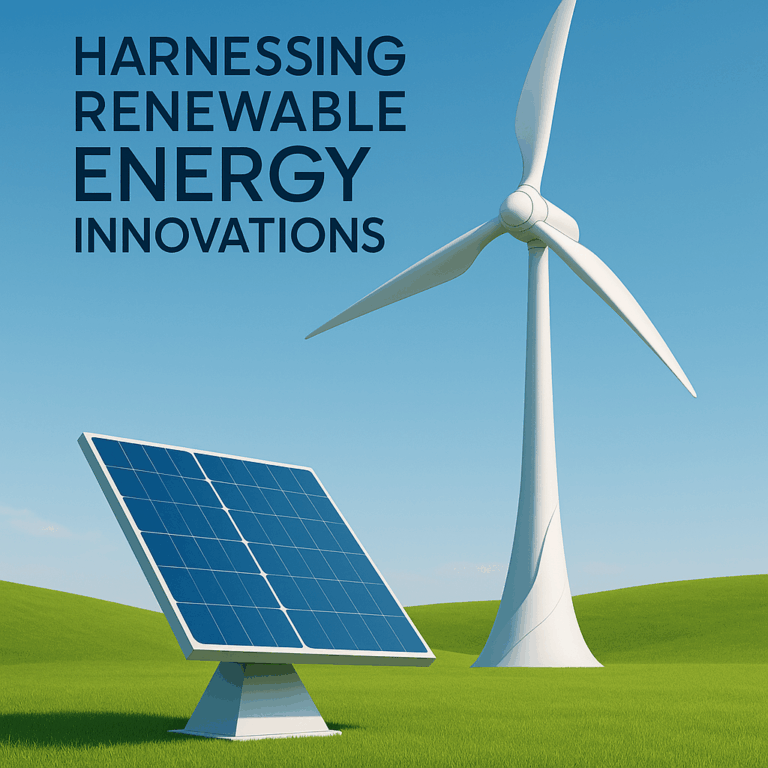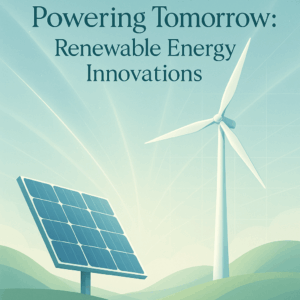Riding the Wave of Renewable Energy Innovations: Strategies for Energy Business Success
The energy sector is undergoing a seismic transformation—buzzwords like “renewable energy innovations” and “energy technology” aren’t just boardroom jargon anymore; they’re the lifeblood of business solutions that distinguish the leaders from laggards. For those embedded in the energy business, embracing these shifts isn’t optional—it’s survival. Yet, the path to sustainable success is paved with more than just shiny new tech; it demands strategic leadership, a vibrant workplace culture, and an agile approach to productivity and policy.

Rethinking Energy Business through the Lens of Industry Trends
The latest industry trends point unequivocally towards decarbonization, decentralization, and digitalization. Renewable energy innovations such as advanced battery storage, smart grids, green hydrogen, and AI-driven energy management systems are more than buzzwords—they are tangible game changers. However, integrating them into existing energy business models often hits a familiar snag: resistance to change. The antidote? Leadership that not only champions innovation but also actively fosters a workspace where curiosity trumps complacency.
Take California’s ambitious push for 100% clean energy by 2045. Utilities and startups alike have embraced hybrid energy portfolios that combine solar, wind, and storage solutions. Their case studies reveal a common thread: companies that synchronize technology adoption with clear sustainability goals and employee empowerment outperform those fixated solely on bottom-line cost cutting.
Leadership in the Era of Energy Transition
The success formula in the energy sector is evolving fast. Traditional energy executives must transition from command-and-control archetypes to leaders fluent in change management and technological literacy. Here, leadership equates to being an agile communicator who understands emerging energy policies and motivates teams to innovate under regulatory uncertainties—a challenge not unlike navigating a ship through turbulent, uncharted waters.
A personal anecdote from my work with a mid-sized renewable energy startup illustrates this vividly. The CEO pivoted from a top-down style to fostering cross-functional collaboration, empowering engineers, policy experts, and data scientists equally. The result? A 40% acceleration in product development cycles and a culture primed for creativity. That’s leadership energizing productivity, no pun intended.
Harnessing Technology and Business Solutions for Superior Productivity
Energy businesses that harness cutting-edge energy technology—especially digital tools—leap ahead because they streamline operations and unlock new value chains. Artificial intelligence and machine learning optimize predictive maintenance of infrastructure, reducing downtime and operational costs. Blockchain facilitates transparent, decentralized energy trading that meets emerging regulatory requirements and consumer demands for sustainability.
But technology is only part of the equation. Business solutions that embed sustainability in every layer—from procurement to product design—set companies apart in a crowded market. Case studies from European grid operators who invested in digitization and green infrastructure metrics reveal a 25% improvement in operational efficiency. By marrying technology investments with targeted workplace culture shifts that encourage experimentation and accountability, firms can sharply boost their productivity.
Workplace Culture: The Silent Catalyst of Energy Sector Success
Sustainability in business goes beyond environmental impact; it permeates how companies nurture talent and foster workplace culture. Energy businesses embracing renewable energy innovations must cultivate cultures that value diverse perspectives and support continuous learning. Whether it is through structured mentorship programs or innovation labs, these initiatives breed the kind of engaged, motivated workforce essential for long-term competitive advantage.
In one recent consulting engagement, a client revamped their internal culture from siloed departments to integrated project teams dedicated to specific energy policy challenges. This shift not only improved project delivery times by 30% but created a palpable sense of ownership and pride in driving sustainability goals.
Energy Policy: Navigating Complexity with Strategic Foresight
Ultimately, no energy business can ignore the labyrinthine world of energy policy. Regulatory frameworks shape investment flows, define market opportunities, and often make or break innovative projects. Leading firms invest in policy intelligence units that monitor and interpret shifts in energy law—from carbon pricing to renewable portfolio standards. These units provide strategic agility that allows companies to anticipate conditions rather than react belatedly.
Consider the example of a solar startup that aligned its growth strategy with evolving subsidies and tax incentives in Southeast Asia, enabling rapid scaling before competitors. It’s a classic case study demonstrating how deep policy literacy combined with industry insights drives sustainable advantage.
Final Spark: Empowering Tomorrow’s Energy Leaders
For energy business enthusiasts—whether budding entrepreneurs, seasoned executives, or policy buffs—the mandate is clear: blend innovation with strategic leadership, cultivate a dynamic workplace culture, lean into productivity-enhancing technologies, and anticipate policy currents with acumen. The stakes have never been higher, but neither has the potential for game-changing impact.
As the legendary management consultant Peter Drucker said, “The best way to predict the future is to create it.” In the rapidly shifting mosaic of the energy sector, proactive creation through renewable energy innovations and sustainability-driven business solutions is the surest route to success. The technology is ready, the policy landscape is evolving, and the demand for cleaner energy is surging—your move.



